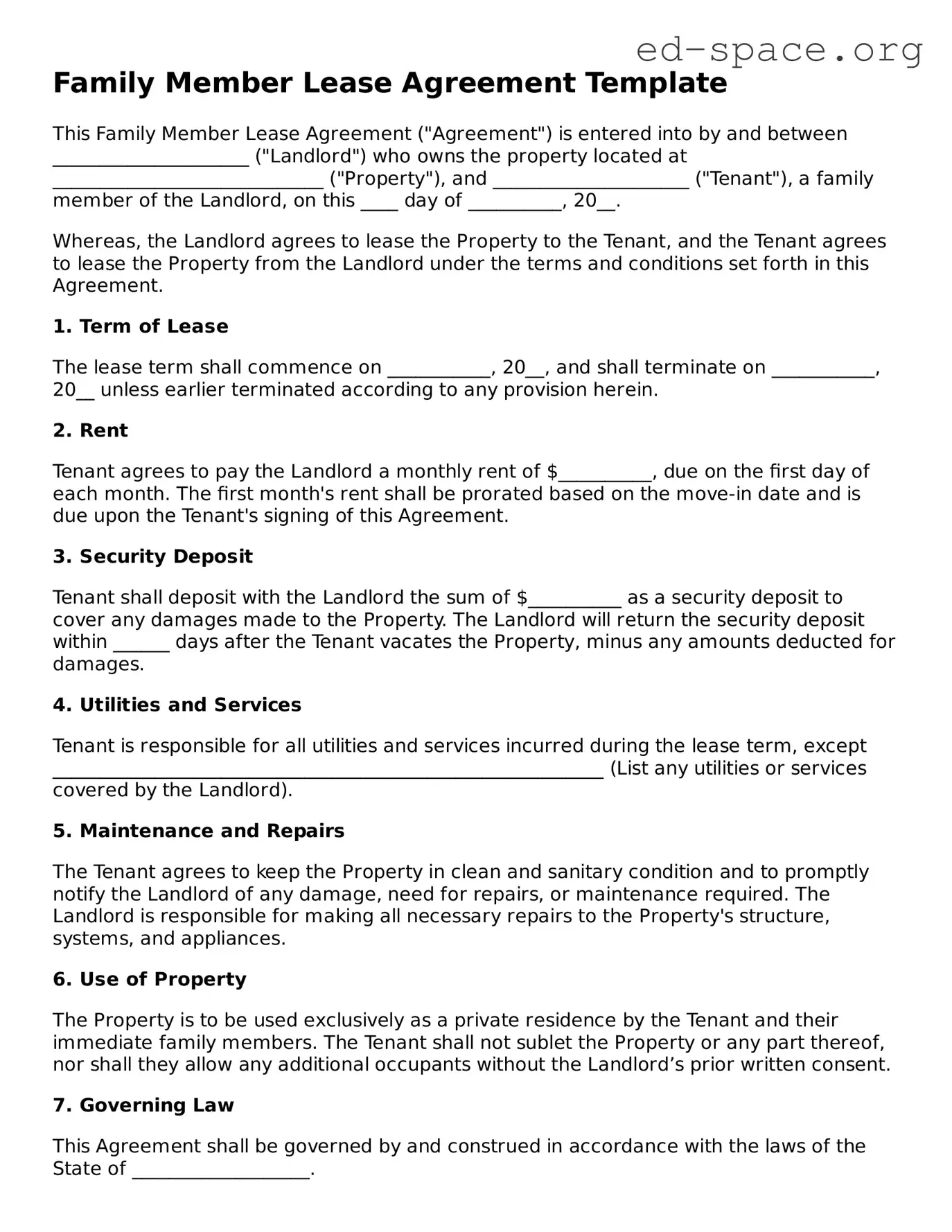Family Member Lease Agreement Template
This Family Member Lease Agreement ("Agreement") is entered into by and between _____________________ ("Landlord") who owns the property located at _____________________________ ("Property"), and _____________________ ("Tenant"), a family member of the Landlord, on this ____ day of __________, 20__.
Whereas, the Landlord agrees to lease the Property to the Tenant, and the Tenant agrees to lease the Property from the Landlord under the terms and conditions set forth in this Agreement.
1. Term of Lease
The lease term shall commence on ___________, 20__, and shall terminate on ___________, 20__ unless earlier terminated according to any provision herein.
2. Rent
Tenant agrees to pay the Landlord a monthly rent of $__________, due on the first day of each month. The first month's rent shall be prorated based on the move-in date and is due upon the Tenant's signing of this Agreement.
3. Security Deposit
Tenant shall deposit with the Landlord the sum of $__________ as a security deposit to cover any damages made to the Property. The Landlord will return the security deposit within ______ days after the Tenant vacates the Property, minus any amounts deducted for damages.
4. Utilities and Services
Tenant is responsible for all utilities and services incurred during the lease term, except ___________________________________________________________ (List any utilities or services covered by the Landlord).
5. Maintenance and Repairs
The Tenant agrees to keep the Property in clean and sanitary condition and to promptly notify the Landlord of any damage, need for repairs, or maintenance required. The Landlord is responsible for making all necessary repairs to the Property's structure, systems, and appliances.
6. Use of Property
The Property is to be used exclusively as a private residence by the Tenant and their immediate family members. The Tenant shall not sublet the Property or any part thereof, nor shall they allow any additional occupants without the Landlord’s prior written consent.
7. Governing Law
This Agreement shall be governed by and construed in accordance with the laws of the State of ___________________.
8. Entire Agreement
This Agreement constitutes the entire agreement between the parties and supersedes any prior understandings or agreements between them. Any amendments to this Agreement must be in writing and signed by both parties.
9. Signatures
IN WITNESS WHEREOF, the parties hereto have executed this Agreement as of the date first above written.
Landlord: ___________________________________ Date: _______________
Tenant: ____________________________________ Date: _______________
